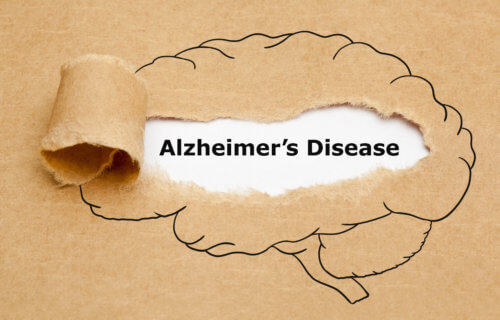PERTH, Australia — Alzheimer’s disease is becoming more and more common, with an estimated six million Americans currently living with the condition. Making matters worse is the fact that there is no effective cure yet. New research out of Australia, however, is shedding light on at least one cause of Alzheimer’s that may open the door for a breakthrough treatment. Researchers from Curtin University report that a “probable” cause of Alzheimer’s disease is the leaking of fat-carrying particles transporting toxic proteins into the brain from blood.
Modern medicine has deciphered a great deal about Alzheimer’s and its origins. For example, the abnormal build up of tau proteins in the brain appears to be a significant trigger for the disease. There’s still a whole lot we don’t know, though, which is why these new findings are so noteworthy. Study authors discovered this possible cause of Alzheimer’s, dubbed the “blood-to-brain pathway,” in experiments conducted on mouse models.
“While we previously knew that the hallmark feature of people living with Alzheimer’s disease was the progressive accumulation of toxic protein deposits within the brain called beta-amyloid, researchers did not know where the amyloid originated from, or why it deposited in the brain,” lead investigator and Curtin Health Innovation Research Institute (CHIRI) Director Professor John Mamo says in a university release.
“Our research shows that these toxic protein deposits that form in the brains of people living with Alzheimer’s disease most likely leak into the brain from fat carrying particles in blood, called lipoproteins,” he continues. “This ‘blood-to-brain pathway’ is significant because if we can manage the levels in blood of lipoprotein-amyloid and prevent their leakage into the brain, this opens up potential new treatments to prevent Alzheimer’s disease and slow memory loss.”
Does Alzheimer’s start in the liver?
In earlier research, the Curtin team found that beta-amyloid forms outside the brain from lipoproteins. In this study, they tested the blood-to-brain pathway hypothesis by genetically engineering mice capable of producing human amyloid-only livers that create lipoproteins.
“As we predicted, the study found that mouse models producing lipoprotein-amyloid in the liver suffered inflammation in the brain, accelerated brain cell death and memory loss,” Prof. Mamo explains. “While further studies are now needed, this finding shows the abundance of these toxic protein deposits in the blood could potentially be addressed through a person’s diet and some drugs that could specifically target lipoprotein amyloid, therefore reducing their risk or slowing the progression of Alzheimer’s disease.”
Alzheimer’s WA Chairman Adjunct Professor Warren Harding believes this work may one day change the lives of millions.
“Having universities like Curtin working with the pharmaceutical industry is important if we are to tackle this devastating disease,” Harding concludes. “In Australia, approximately 250 people are diagnosed with dementia daily, adding to the staggering half a million Australians who are already living with dementia. Without significant medical advances like the breakthrough Professor Mamo’s team has made, it is estimated that the number of Australians living with dementia will exceed one million by 2058. This has a significant impact on families, carers and communities.”
The findings appear in the journal PLoS Biology.
